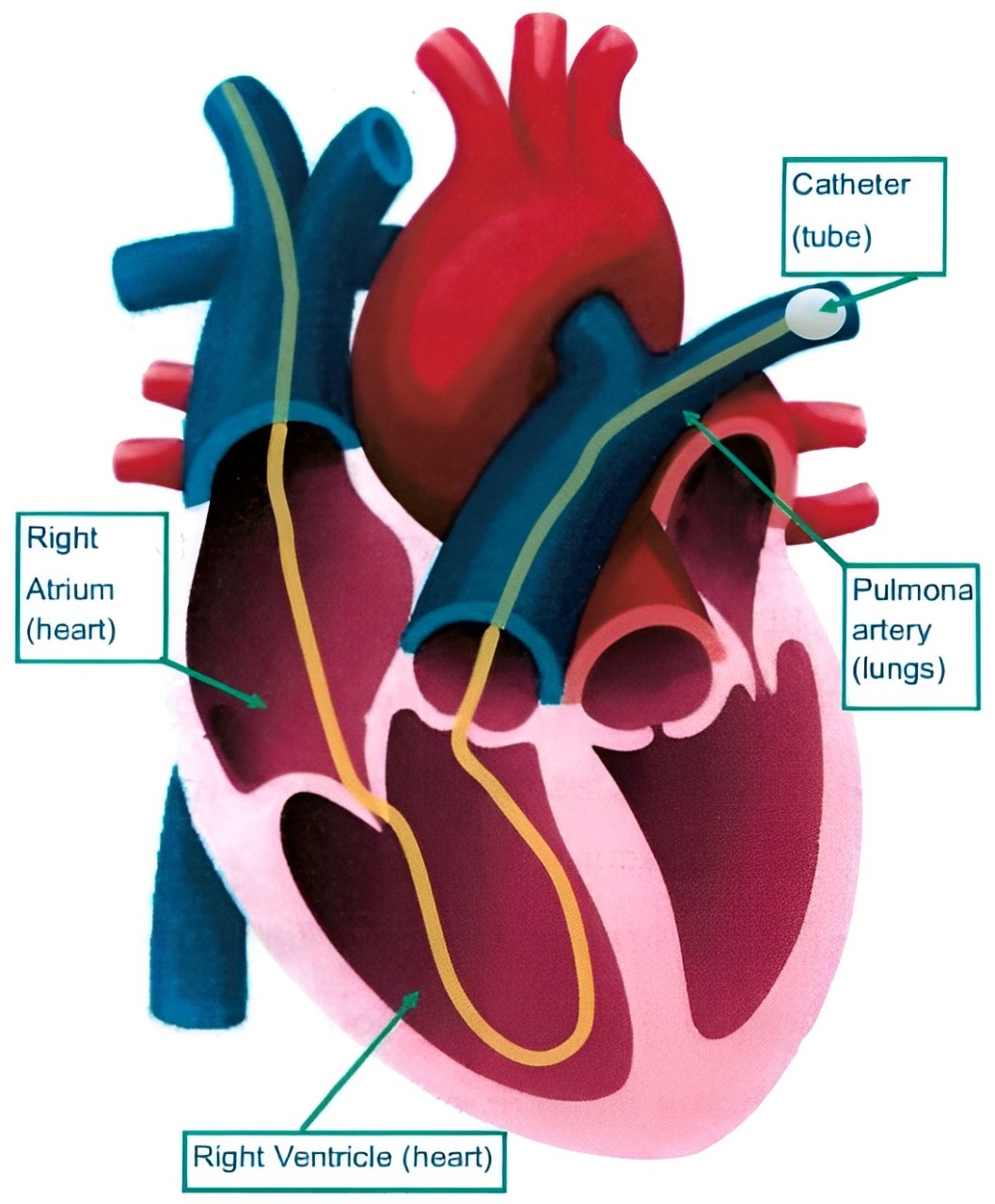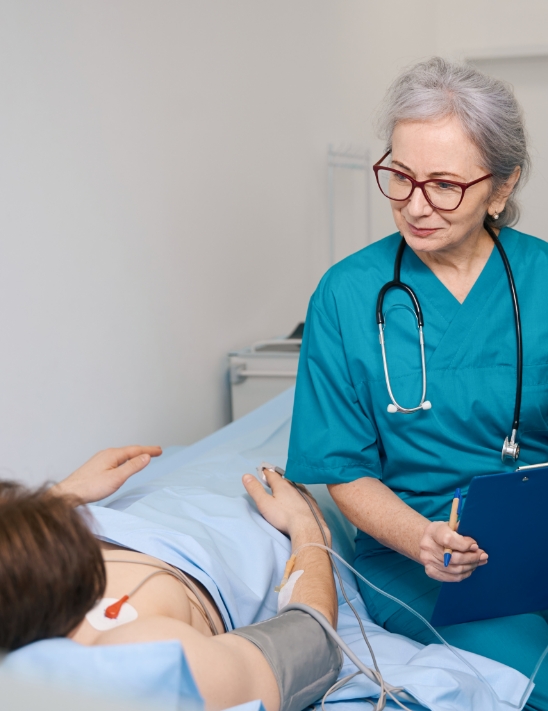Right Heart Catheterisation

What is a Right Heart Catheterisation (RHS)?
A thin flexible tube is inserted into a blood vessel (vein) in either your groin (femoral) or your neck (jugular). The tube is then positioned in your heart and blood vessels to your lungs. This is to see how well your heart pumps per minute, measure the blood pressure in your heart and blood vessels in your lungs.
A RHS helps diagnose or manage the following conditions;
Heart failure
Pulmonary hypertension
Heart valve disease
Congenital heart disease
How long will it take?
The procedure will take approximately 30 minutes to 60 minutes.
What are the risks?
Your doctor has recommended you for a RHS as they believe the benefits to you outweigh the risk of not going ahead with the procedure. There are risks and complications related to this procedure. They include but are not limited to the following;
Minor bleeding and bruising at the site where the tube was inserted (neck or groin).
Abnormal heartbeat lasting which settles by itself after a several seconds.
A blood clot (embolism) or air (air embolism) may form and break off from the catheter. This may travel to your legs causing pain and swelling or your lungs. This may need blood thinning medication or oxygen.
Damage to the vein in your groin or neck. This may need surgical repair.
Damage to blood vessel in your lungs causing bleeding or damage to your heart or the heart valve such as a hole. This may need surgical repair.
Infection. This may need antibiotics.
Damage to the nerve in the leg.
Abnormal heart rhythm that may need an electric shock to correct.
A stroke. This can cause long term disability.
Death as a result of this procedure is extremely rare.
Before Your Procedure
Do not eat anything 6 hours before your procedure, you may drink only clear fluids up until 2 hours before your procedure.
If you are diabetic and take Metformin (Diabex®, Diaformin®) stop taking 2 days before and 2 days after your procedure. If you take Empagliflozin (Glyxambi®, Jardiamet®, Jardiance®) or Dapagliflozin (Forxiga®, Xigduo XR®, Qtern®) stop taking 3 days before.
Your Cardiologist may stop your Warfarin, Dabigatran, Rivaroxaban & Apixaban 2- 3 days before the procedure, but Aspirin, Clopidogrel, Prasugrel & Ticagrelor are usually continued.
Please let us know if you are allergic to any medications.
Ask any questions that you or your family may have and sign a form consenting to the procedure.
Please arrange a friend or family member to take you home from hospital and stay with you for your first night at home. You cannot go home alone or in a taxi.
You will change into a hospital gown, an ID band applied and your procedure site (groin) clipped of any hair. The healthcare team will take your blood pressure and pulse and insert an IV (intravenous) line into a vein in your arm.
During the Procedure
The RHS is done in a Cardiac Catheterisation Laboratory (Cath Lab).
You will lie either flat on your back or with your back slightly elevated on a narrow x-ray table.
It is important that you try and stay still under the drape. After the local anaesthetic is injected your groin or neck will become numb and the procedure will begin.

After the Procedure
The catheters (tubes) will be removed and the incision closed by pressing on the site. Your doctor will explain the results of the procedure and recommend the best treatment for you. You will return to the ward where you will stay until you are discharged.
Activity After the Procedure & At Home
If your neck vein was used, you can sit up comfortably afterwards. If your groin was used you will need to lie flat in bed for a 2-4hrs afterwards.
You may be able to go home the same day (dependent on results).
Rest in a bed or recliner chair on the day of your procedure.
You can eat and drink after the procedure.
In order to avoid complication after the procedure avoid strenuous activity such as mowing, running or hard labour. Do not lift objects more than 5kg (10lbs) for 5 days afterwards. Slowly return to normal activities the next day.
Limit stair climbing as much as possible on the day of your procedure.
If your groin was used limit the use of the affected limb for the next 48 hours such as bending or squatting.
Wound Site Care
The dressing on your neck or groin can be removed the day after your procedure.
You may take a shower the day after your procedure, do not take a bath or go swimming for 2 days after your procedure.
Lightly wash and pat dry the wound site for a week. Avoid creams, lotions or ointments to the wound site.
Notify your nurse or doctor if you notice any of the following:
A lump that is getting bigger or any swelling at the wound site
Constant redness or warmth
Worsening numbness or discomfort (mild discomfort is normal)
Yellow ooze/pus from the wound site
Shortness of breath or trouble breathing
Chest pain or pressure, nausea or vomiting, profuse sweating, dizziness or fainting.
If there is bleeding or a lump getting bigger at the wound site
1) Lie down straight away and apply firm pressure to the site for 15 minutes (enough to feel the heart beat under your fingers).
2) If bleeding continues or is a large uncontrolled amount or you feel faint or dizzy call ‘000’ immediately. Do not drive yourself to the hospital. Continue to apply pressure until help arrives.
Driving once you are home
Do not drive for at least 2 days after your procedure.
More information can be obtained from your Cardiologist or the Roads and Maritime Services.
Follow Up
Please see your local doctor in 3 days and make an appointment to see your Cardiologist in 4 weeks.


